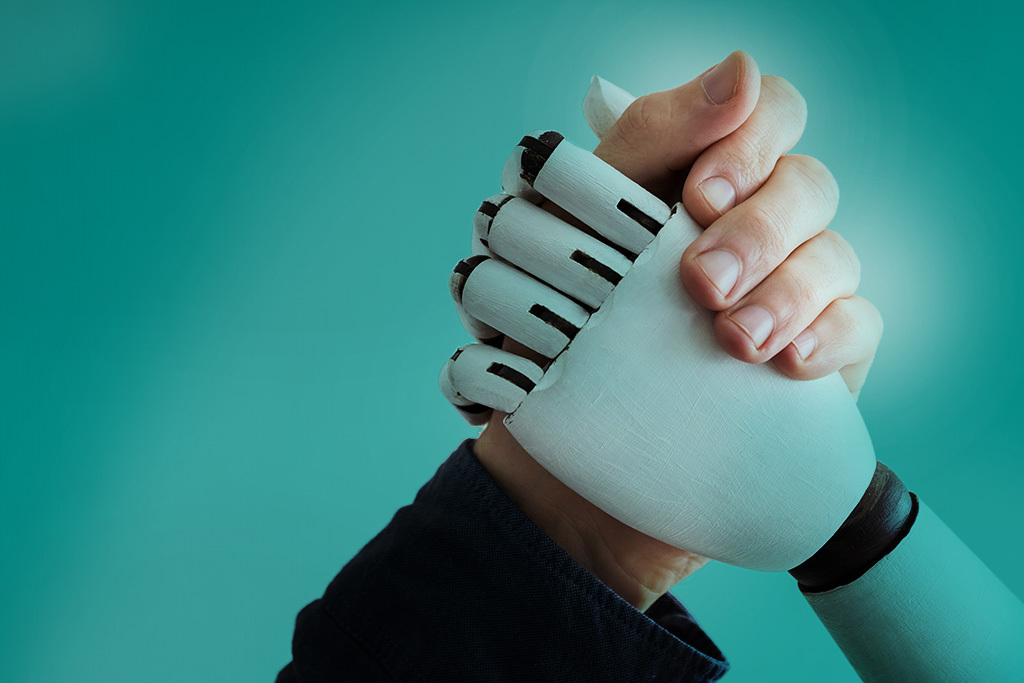The technological industry seems to have two thoughts when it comes to where human workers adapt to the world based on artificial intelligence they are creating: either they think that all the works, except theirirs, will be done by the robots. (VC Marc Andreesen seems to think that his investor work could never be automated).
Or they think that robots will do the icky and boring work, acting as human companions in work while humans do new minting jobs that the Bot revolution creates. The latter is the one most supported by historical evidence. The World Economic Forum provides that 92 million roles will be displaced by current technological trends, but that 170 million new jobs will be created.
For those who do not have the economic power, or intellectual interest, to obtain an automatic learning master in AI and people who now occupy unqualified work roles such as warehouse workers in appearance has the future full of bots?
Amazon offered a hint of a type of path on Wednesday when he announced serious progress towards the replacement of warehouse workers with robot with his new robot Vulcan that can “hear”.
“Vulcan is helping to make the job safer by managing tasks ergonomically challenging, while creating opportunities for our teammates to increase their skills in the maintenance of robotics”, published CEY Jassy on X.
In a breath, Amazon’s blog post on Vulcan has described how the robot will work next to humans, collecting objects from the highest and lower shelves in the warehouse, so humans will not have to climb the stairs or bend all day. Humans will then collect objects stored only in the middle and/or objects that the new robot “sensation” still somehow cannot collect.
In the next breath, Amazon talks about how a small number of warehouse workers are training to become robot technicians, as he uses the bot for a warehouse collection role.
Techcrunch event
Berkeley, ca.
|
June 5th
Book now
“These robots – who play a role in the completion of 75% of customers’ orders – have created hundreds of new categories of jobs on Amazon, from robotic floor monitors to on -site maintenance engineers,” said blog post, adding that it offers a work redevelopment program for some workers to obtain these robotic maintenance skills.
Even if Amazon did not say it, obviously it would not be a 1: 1 conversion. He would not require an army of humans to supervise robots in the same way he needs them to directly satisfy the warehouse orders. Nor would everyone have the aptitude or the desire to become robot mechanics.
But the fact that Amazon has included information on his redevelopment program together with Vulcan’s announcement is significant.
This is because so far there have been very few tests of how the post-tutti-jobs robots for humans of the working class seem. (A founder of artificial intelligence startup has even suggested to Techcrunch who in a world of all Jobs, humans would live in some way only on the well -being issued by the government.)
But perhaps, instead of the shopping employees, there would be “automation monitor”, just as we have an employee who supervises each row of self -control today. Instead of fast food cooks, workers supervise the robots of cook and so on. Robot’s execution becomes how to manage a PC: practically everyone must know how to do it to be occupable.
In addition, this completely bot future may never materialize really. The robots could remain the landlord only the largest and most profound companies, such as with Amazon or how they are used in things such as automotive-twentieth century the vast majority of retail sale, restaurants and driving works continue to be done by humans. At least for decades more.
Remember, Amazon is a company that was trying to sell its automation Just-Out Amazon Go Technology to a wider retail sector/food sector. The retail sector is not too fond of its largest competitor, Amazon, and was not terribly interested. Later it was discovered that technology is using humans in India to watch and label videos, and even Amazon later has reduced to its use. This technology (by Amazon or others) is not almost visible in nature today.



